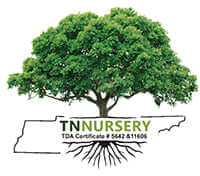Plants can turn a dull, unattractive yard into a beautiful, welcoming personal paradise. When you get ready to landscape with plants, there are many things to consider. Your soil will play an essential part in plants' health; before doing anything else, you should amend the soil to ensure it is well draining and well aerated. This may be as simple as tiling it - alternatively, you may need to add some sphagnum peat and organic compost. Next, choose your plants. Here are ideas for kinds of garden plants to use in specific areas of the yard.
Border Garden Plants
For border plants, some things to consider are whether you want non-flowering or
flowering shrubs and a tall border or a low-growing border. Around the yard's perimeter, you might choose tall shrubs; in contrast, you may choose a low-growing border plant around a flowerbed. For a classic evergreen shrub, you can go with the standard boxwood. Alternatively, choose from azalea,
hydrangea, forsythia, Rose of Sharon, or a variety of other flowering shrubs. When planting young garden plants and shrubs, you should remember to allow space between them, as they will fill out as they grow. Shade Garden Plants If you have complete to partial-shade areas, fill these with shade-loving perennials. These include hosta, hellebore, lamium, and groundcovers such as
ajuga. Check the soil and watering needs of the different plants when planting them together. It is best to choose plants with similar needs when planting them in the same flowerbed. It helps if you keep in mind plant height. Shorter plants should be planted in from taller plants so they do not become hidden.
Garden Plants for Sunny Areas
Aster, peony, Black-Eyed Susan, phlox, lavender, and Shasta daisy are among the many perennials that enjoy sunny areas. Each year you can also add some sun-loving annuals to the mix if you choose. Marigolds are one popular choice. Flowering plants and evergreen shrubs are not the only kinds of plants you can consider. Ornamental grasses, such as fountain grass and pampas grass, add exciting additions to the landscape. Many of these grasses can grow quite large, so keep that in mind. Garden Plants Color SchemesFor particular areas, choose similar or complementary colors. For example, one area may have a combination of soft pink, white, and pale blue flowers. Another area could have orange, yellow, and red flowering plants. Nothing says you cannot combine flower colors uniquely, but you may want to avoid odd clashes, such as placing soft pink flowers next to red-orange.
Garden Plants Come in Many Forms All Which Can Transform Your Yard

